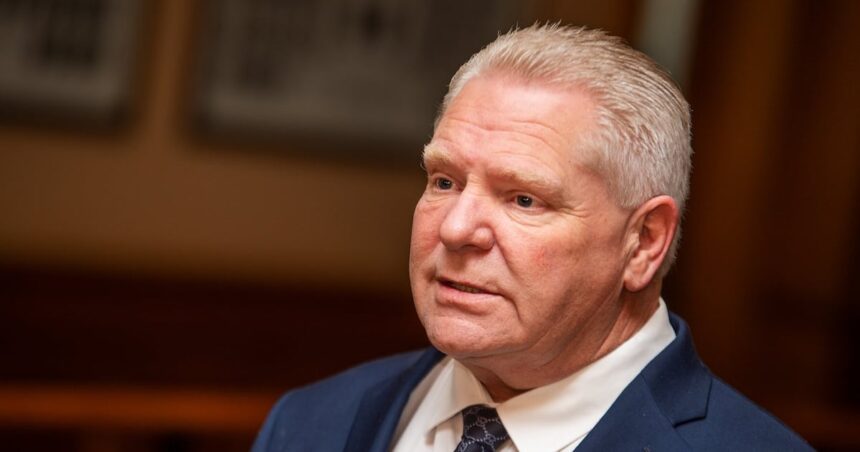In a political landscape where shifting voter sentiment often narrows the gap between parties as elections approach, Premier Doug Ford’s Progressive Conservatives are defying conventional wisdom. A stunning new survey reveals Ford’s PCs have opened up a commanding 21-point lead over their closest rivals, solidifying their position as Ontario’s dominant political force with less than two years until the next provincial election.
The Nanos Research poll, conducted for CTV News Toronto, shows the PCs with 42 percent support among decided voters, while the Ontario Liberals trail significantly at 21 percent. The NDP finds itself in a similar position with 20 percent support, followed by the Green Party at 6 percent.
“These are not small margins,” noted veteran pollster Nik Nanos. “Ford’s party has established what appears to be a significant structural advantage that will be difficult for opposition parties to overcome without a major shift in the political environment.”
The survey reveals particularly strong support for Ford in the crucial 905 region surrounding Toronto, where the PCs lead with 47 percent support compared to the Liberals’ 20 percent. This suburban battleground has proven decisive in recent provincial elections, with parties that dominate this region typically forming government.
Perhaps most concerning for opposition parties is Ford’s resilience despite facing criticism on multiple policy fronts. The premier has weathered controversies surrounding healthcare management, education funding, and environmental policies, yet maintains robust approval ratings.
“Ford has successfully positioned himself as a pragmatic leader focused on everyday concerns like affordability and economic growth,” explained Dr. Sarah Richardson, political science professor at the University of Toronto. “While critics point to ideological decisions, many voters see him addressing their kitchen table issues.”
The Ontario Liberals, still rebuilding after their 2018 electoral collapse, face significant challenges despite selecting new leader Bonnie Crombie earlier this year. The former Mississauga mayor has yet to significantly boost party fortunes, though analysts caution that she remains relatively unknown to many voters.
“Crombie needs time to establish her provincial profile,” noted Richardson. “The challenge is whether she can effectively position herself as a centrist alternative to Ford while differentiating from the NDP on economic matters.”
For the New Democrats under Marit Stiles, the poll suggests a struggle to break through despite being the official opposition. The party’s support remains concentrated in urban centers and northern Ontario, limiting their pathway to broader electoral success.
The economic outlook may partially explain Ford’s continued popularity. Despite inflation concerns, Ontario’s unemployment rate remains below the national average, and the province continues to attract significant investment in manufacturing and technology sectors.
Ford’s team has already begun positioning for the 2026 campaign, emphasizing infrastructure development, housing initiatives, and targeted tax relief. Recent announcements on highway construction and healthcare investments suggest a government focused on tangible deliverables before the next election.
Political strategists suggest opposition parties must recalibrate their approach to effectively challenge Ford’s dominance. “Simply criticizing the government’s record hasn’t moved the needle,” said former Liberal strategist Michael Thompson. “They need to present a compelling alternative vision that addresses voters’ economic anxieties while offering solutions to systemic challenges in healthcare and housing.”
As Ontario’s political landscape continues to evolve, the question remains: can either opposition party construct a coalition capable of seriously challenging Ford’s dominance, or are we witnessing the solidification of a PC dynasty that could extend well beyond the next election cycle?











